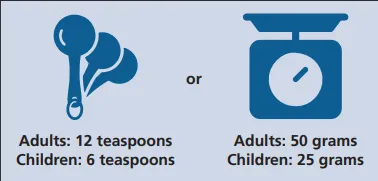The Basics of Mouth Sores
Three common types of mouth sores are canker sores, cold sores, and mouth sores from dentures, called denture stomatitis.
CANKER SORES
Canker sores develop inside the mouth on the lining of the lip or cheeks or on the tongue. These sores are painful, shallow breakouts that have a red border and a yellowish center. They can last anywhere from 1 to 2 weeks.
It is uncertain what causes canker sores. Some say they are caused by
- trauma (like when you bite down on your tongue or cheek)
- some digestive diseases such as Crohn disease, ulcerative colitis, or celiac disease
- a reaction to sodium lauryl sulfate—the chemical in toothpaste that makes it foamy.
To help heal the sore and reduce the pain and size, your dentist might recommend a gel or cream that you apply directly on the sore. If you have a serious problem with frequent or large canker sores, the dentist may prescribe a medication or mouthrinse to control outbreaks.
COLD SORES
It is estimated that more than 60% of people worldwide have the virus that causes cold sores (human herpesvirus 1). Cold sores can develop near your nostrils and eyes, but they are most common on the border of your lips. Before the cold sore develops, you may have a tingling, itching, or burning sensation at the site where the sore will emerge. Within about 24 hours, a painful blister will develop that may be runny. Like canker sores, cold sores can last 1 to 2 weeks.
Cold sore outbreaks can sometimes be triggered by
- emotional stress
- illness
- sun exposure without sunscreen.
Cold sores can be passed easily from one person to another. The virus can survive on hard surfaces, which puts you at risk of spreading it by touching your sore and then coming into contact with another person by touching them or handling objects they may use or touch.
To shorten the outbreak and help reduce discomfort, your dentist may suggest a cream that you can put on the sore (wash your hands carefully after use to avoid spreading the virus). In severe cases, your dentist may prescribe a medication that attacks the virus that causes the sores.
MOUTH SORES FROM DENTURES
Mouth sores known as denture stomatitis affect people who wear dentures. They can develop on any moist soft-tissue surface in your mouth but most often develop under your dentures, on the roof of your mouth, or under the tongue. The red patches that form may have no symptoms or may burn, sting, or itch. They may also affect your senses of taste and smell.
Denture stomatitis normally arises from wearing your dentures too long or not cleaning your dentures properly. Although your dentist may prescribe an antifungal medicine, properly caring for your dentures may be more helpful.
- Do not wear your dentures when you sleep.
- Clean your dentures with a nonabrasive cleaner (not toothpaste, which can scratch your dentures).
- Brush your mouth thoroughly, including your gums, cheeks, roof of your mouth, and tongue.
CONCLUSION
Mouth sores such as canker sores, cold sores, or irritations from dentures are common. Luckily, your dentist may be able to help you control these outbreaks, reduce pain, limit the size and spread of the sores, and shorten the outbreak itself.
https://doi.org/10.1016/j.adaj.2022.07.010
Prepared by Anita M. Mark, senior scientific content specialist, ADA Science and Research Institute, Chicago, IL.
Disclosure. Ms. Mark did not report any disclosures.
Copyright 2022 American Dental Association. Unlike other portions of JADA, the print and online versions of this page may be reproduced as a handout for patients without reprint permission from the ADA Publishing Division. Any other use, copying, or distribution of this material, whether in printed or electronic form, including the copying and posting of this material on a website, is prohibited without prior written consent of the ADA Publishing Division.
“For the Patient” provides general information on dental treatments. It is designed to prompt discussion between dentist and patient about treatment options and does not substitute for the dentist’s professional assessment based on the individual patient’s needs and desires.
You can find more information for patients at ADAcatalog.org or at MouthHealthy.org.

Figure. Food and beverage labels may list added sugar. The US Department of Agriculture says adults should have no more than the amounts pictured above per day.4 The American Academy of Pediatrics sets the daily limits for children.
your daily diet (Figure). Packaged products have nutrition labels that include information on added sugar to help you choose foods and drinks.
CONCLUSION
Added sugar in a diet can increase the risk of cavities and gum disease. Be sure to check the labels on your foods and drinks to see how much added sugar they contain. Visit MyPlate.gov for tips on a healthy diet.7
https://doi.org/10.1016/j.adaj.2023.03.012
Prepared by Anita M. Mark, senior scientific content specialist, ADA Science and Research Institute, Chicago, IL.
Disclosure. Ms. Mark did not report any disclosures.
Copyright© 2023 American Dental Association. Unlike other portions of JADA, the print and online versions of this page may be reproduced as a handout for patients without reprint permission from ADA Publishing. Any other use, copying, or distribution of this material, whether in printed or electronic form, including the copying and posting of this material on a website, is prohibited without prior written consent of ADA Publishing.
“For the Patient” provides general information on dental treatments. It is designed to prompt discussion between dentist and patient about treatment options and does not substitute for the dentist’s professional assessment based on the individual patient’s needs and desires. You can find more information for patients at ADAstore.org or at MouthHealthy.org.
1. Tungare S, Paranjpe AG. Diet and nutrition to prevent dental problems. In: StatPearls. NCBI Bookshelf version. StatPearls Publishing: 2023. Accessed April 4, 2023. https://pubmed.ncbi.nlm.nih.gov/30480981
2. Gupta M. Sugar substitutes: mechanism, availability, current use and safety concerns—an update. Open Access Maced J Med Sci. 2018;6(10):1888-1894.
3. Martínez Steele E, Baraldi LG, Louzada ML, Moubarac JC, Mozaffarian D, Monteiro CA. Ultra-processed foods and added sugars in the US diet: evidence from a nationally representative cross-sectional study. BMJ Open. 2016;6(3):e009892.
4. US Department of Agriculture, US Department of Health and Human Services. Dietary Guidelines for Americans, 2020-2025. 9th ed. December 2020. Accessed March 21, 2023. https://www.dietaryguidelines.gov/sites/default/files/2020-12/Dietary_Guidelines_ for_Americans_2020-2025.pdf
5. American Academy of Pediatric Dentistry. Policy on dietary recommendations for infants, children, and adolescents. The Reference Manual of Pediatric Dentistry. American Academy of Pediatric Dentistry; 2021:87-89.
6. Korioth T. Added sugar in kids’ diets: how much is too much? American Academy of Pediatrics. March 25, 2019. Accessed April 5, 2023. https://publications.aap.org/aapnews/ news/7331?autologincheck¼redirected 7. Learn how to eat healthy with my plate. US Department of Agriculture. Accessed March 23, 2023. https://www.myplate.gov











